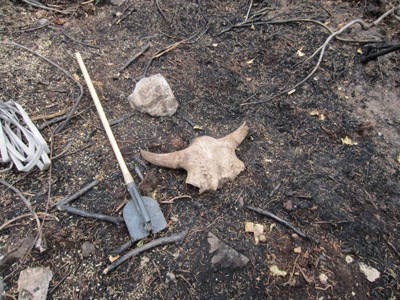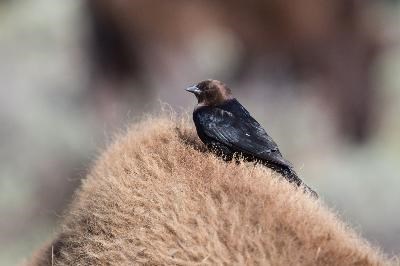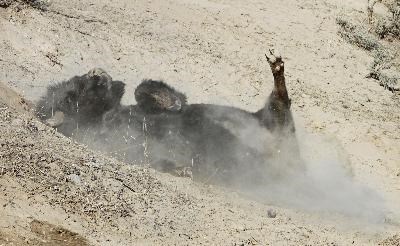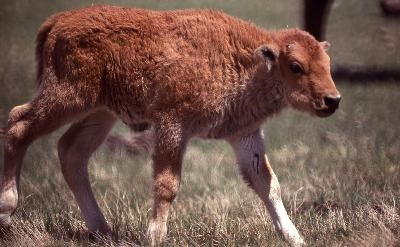Bison and Human Safety
- Bison are wild animals and are unpredictable.
- Maintain a distance of 100 feet (30 m or two bus lengths) from bison.
- When the bison are within 100 feet (30 m) of the road, it is recommended to view theme from inside a vehicle.
- Please use established gravel or paved pull-outs to park vehicles completely off the roadway (all wheels right of the white line). Do not walk or park in the road.
Original range

Photo courtesy of Mark J. Biel.
Predecessors of modern bison found their way from Asia to North America during the middle of the Pleistocene, about 300,000 to 130,000 years ago, when sea levels were low due to ice ages and the Bering Strait was a land bridge. The North American bison we know today appears in the fossil record about 5,000 years ago. Prior to European settlement, tens of millions of bison thrived across the largest original distribution of any native large herbivore in North America, ranging from northern Mexico to interior Alaska, California to New York to Georgia.
Ecological role

NPS Photo/Neal Herbert
For thousands of years, millions of bison shaped ecological communities across North America. Bison adapted to thrive in a variety of ecosystems that offer a diet of grasses, sedges, forbs, and woody plants, and to endure harsh conditions such as drought and severe winter weather. When bison traveled across large landscapes in pursuit of food and water, their nomadic movements, grazing, and wallowing behaviors produced diversity in vegetation and soils, creating habitats that benefitted many plants and animals. Their shaggy coats picked up seeds that later fell off in new places, and insects and bacteria decomposed bison feces, helping to recycle nutrients back into the soil. Bison influenced the diversity and processes of ecosystems that they occupied more than any other large, grazing mammal in North America.
Behavior

Photo by Jim Peaco.
Bison also engage in horning, rubbing their horns on an object such as a tree or shrub, and wallowing, rolling in dry loose ground or using their hooves to tear at the turf to create wallows in which they can roll; these behaviors may help avoid biting insects and display aggressive behaviors.
Cycle of Life and Death

NPS Photo.
Bison Subspecies in North America
There are two different subspecies of bison in North America: Wood Bison (Bison bison athabascae) and Plains Bison (Bison bison bison). There is another subspecies in Europe. The Plains bison is generally smaller in size and has a smaller, more rounded hump than the Wood bison. They are also generally separated geographically with Wood bison being more common in the North and Plains bison being more common in the South.Last updated: September 25, 2023
